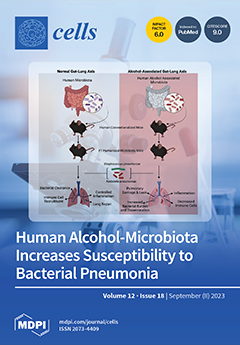Mutations in the transcription factor-coding gene
SOX18, the growth factor-coding gene
VEGFC and its receptor-coding gene
VEGFR3/FLT4 cause primary lymphedema in humans. In mammals, SOX18, together with COUP-TFII/NR2F2, activates the expression of
Prox1, a master regulator in lymphatic identity and development.
[...] Read more.
Mutations in the transcription factor-coding gene
SOX18, the growth factor-coding gene
VEGFC and its receptor-coding gene
VEGFR3/FLT4 cause primary lymphedema in humans. In mammals, SOX18, together with COUP-TFII/NR2F2, activates the expression of
Prox1, a master regulator in lymphatic identity and development. Knockdown studies have also suggested an involvement of Sox18, Coup-tfII/Nr2f2, and Prox1 in zebrafish lymphatic development. Mutants in the corresponding genes initially failed to recapitulate the lymphatic defects observed in morphants. In this paper, we describe a novel zebrafish
sox18 mutant allele,
sa12315, which behaves as a null. The formation of the lymphatic thoracic duct is affected in
sox18 homozygous mutants, but defects are milder in both zygotic and maternal-zygotic
sox18 mutants than in
sox18 morphants. Remarkably, in
sox18 mutants, the expression of the closely related
sox7 gene is elevated where lymphatic precursors arise. Sox7 could thus mask the absence of a functional Sox18 protein and account for the mild lymphatic phenotype in
sox18 mutants, as shown in mice. Partial knockdown of
vegfc exacerbates lymphatic defects in
sox18 mutants, making them visible in heterozygotes. Our data thus reinforce the genetic interaction between Sox18 and Vegfc in lymphatic development, previously suggested by knockdown studies, and highlight the ability of Sox7 to compensate for Sox18 lymphatic dysfunction.
Full article






